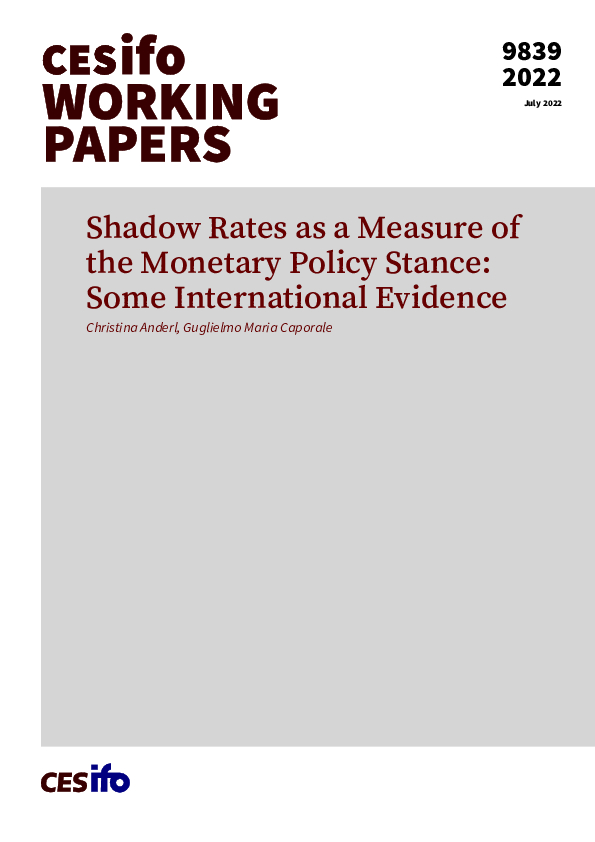Shadow Rates as a Measure of the Monetary Policy Stance: Some International Evidence
CESifo, Munich, 2022
CESifo Working Paper No. 9839

This paper examines the usefulness of shadow rates to measure the monetary policy stance by comparing them to the official policy rates and those implied by three types of Taylor rules in both inflation targeting countries (the UK, Canada, Australia and New Zealand) and others that have only targeted inflation at times (the US, Japan, the Euro Area and Switzerland) over the period from the early 1990s to December 2021. Shadow rates estimated from a dynamic factor model are shown to suggest a much looser policy stance than either the official policy rates or those implied by the Taylor rules, and generally to provide a more accurate picture of the monetary policy stance during both ZLB and non-ZLB periods, since they reflect the full range of unconventional policy measures used by central banks. Further, generalised impulse response analysis based on two alternative Vector Autoregression (VAR) models indicates that monetary shocks based on the shadow rates are more informative than those related to the official policy rates, especially during the Global Financial Crisis and the recent Covid-19 pandemic, when unconventional measures have been adopted.
Monetary Policy and International Finance
Empirical and Theoretical Methods